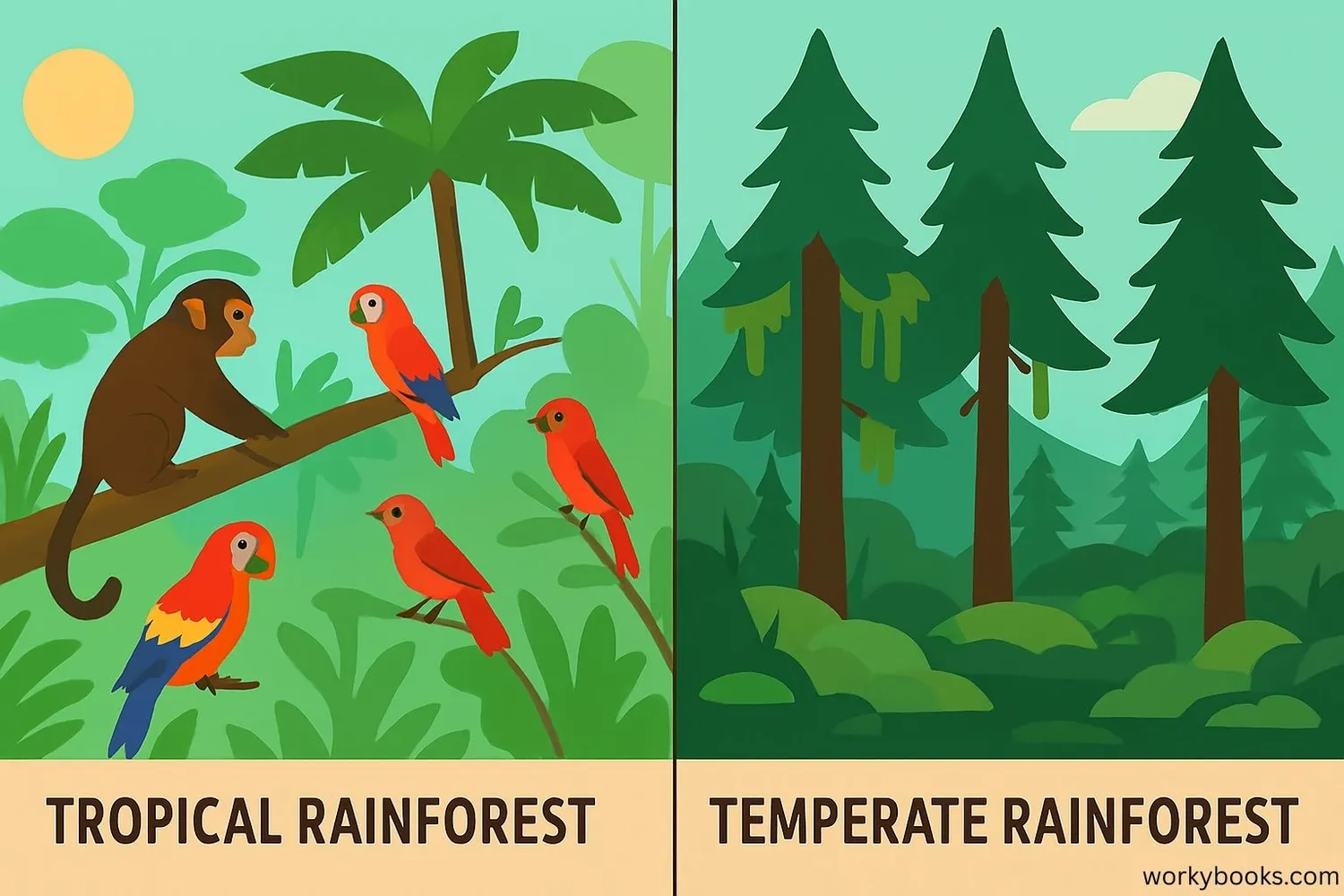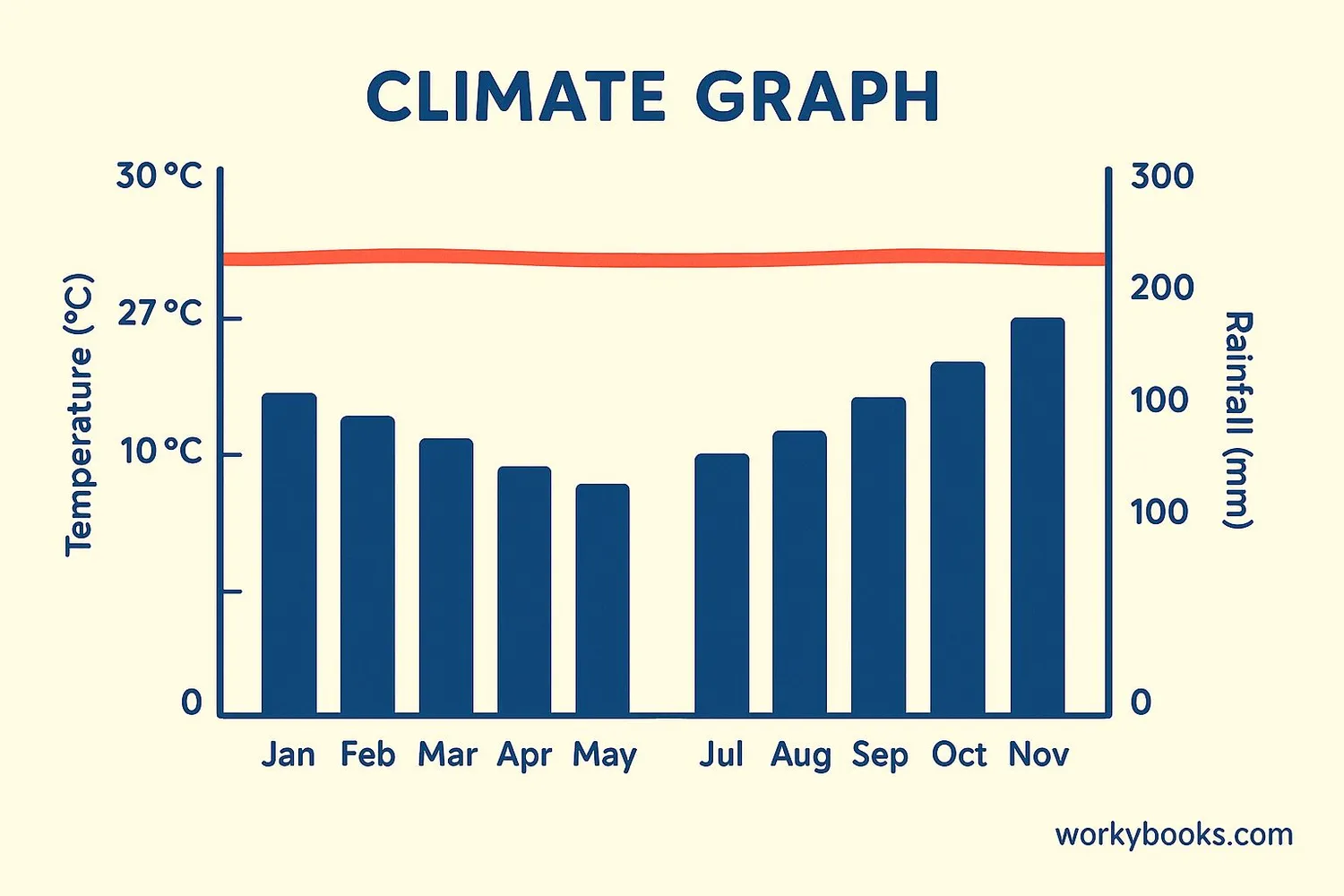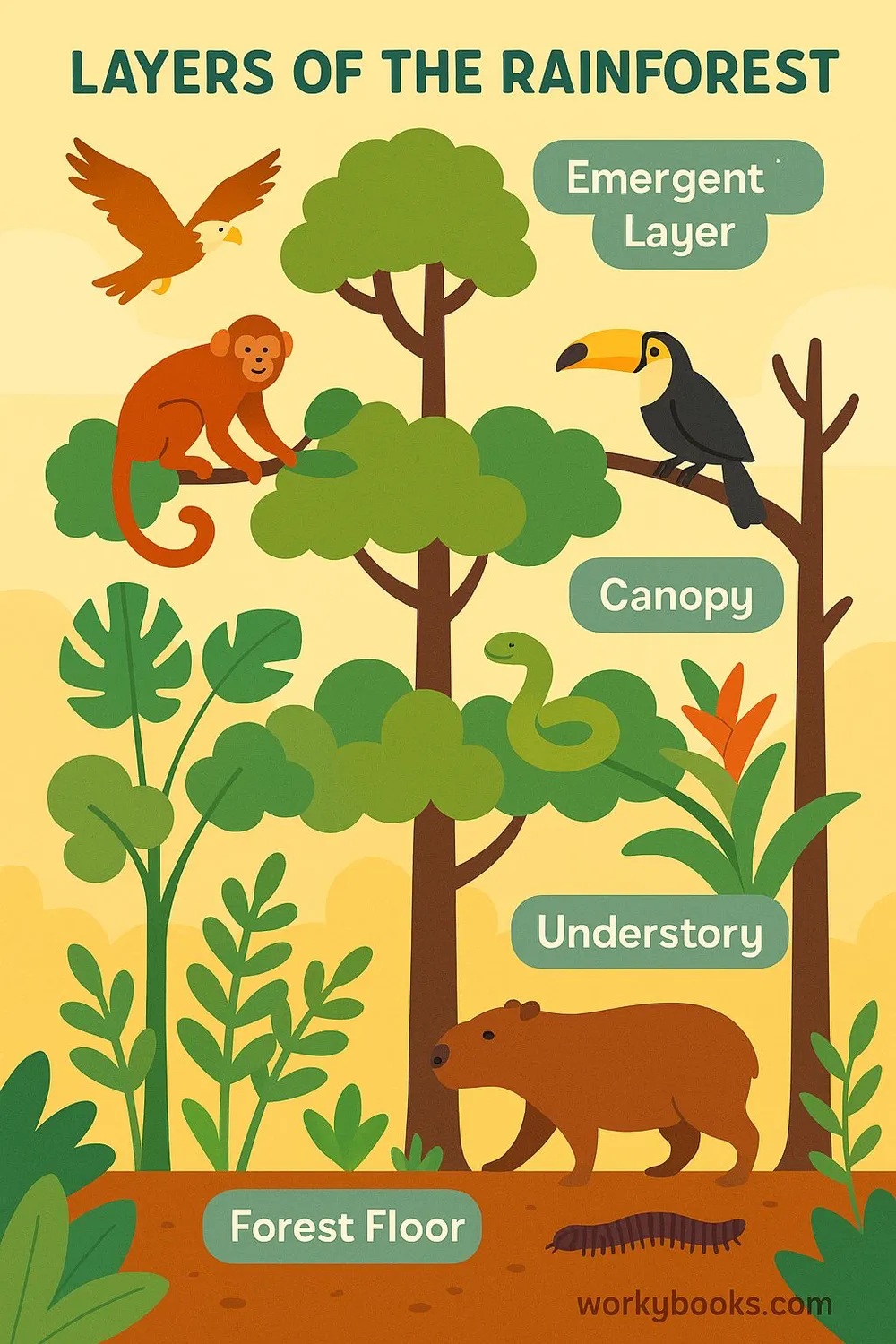Rainforest Climate - Definition, Examples, Quiz, FAQ, Trivia
Discover how rainforests create unique weather patterns and support amazing biodiversity!
What is Rainforest Climate?

A rainforest climate is a tropical climate where it's warm and rainy throughout most of the year. These special climates are found near the Earth's equator, where sunlight is most direct and temperatures stay consistently warm.
Rainforests are Earth's oldest living ecosystems, with some surviving in their present form for at least 70 million years. They are incredibly diverse, housing more than half of the world's plant and animal species—even though they cover only about 6% of the Earth's surface.
Rainforest Fact!
Rainforests are often called the "lungs of the planet" because they produce about 20% of Earth's oxygen!
Types of Rainforests

There are two main types of rainforests, each with their own special climate:
Tropical Rainforests
Found near the equator with warm temperatures year-round and very high rainfall
Temperate Rainforests
Found in cooler coastal areas with heavy rainfall but more seasonal temperature changes
The Amazon rainforest in South America is the largest tropical rainforest, while the Pacific Northwest in North America contains significant temperate rainforests. Both types support incredible biodiversity, but tropical rainforests have greater species variety due to their consistent warm, wet climate.
Amazon Fact!
The Amazon rainforest is so large that it creates its own rainfall through transpiration from its billions of trees!
Rainforest Climate Characteristics

Rainforest climates have several distinctive features that make them unique:
| Characteristic | Description | Impact on Ecosystem |
|---|---|---|
| High Rainfall | Over 2000mm (79 inches) per year, often over 3000mm | Supports lush plant growth and creates many rivers and streams |
| Consistent Temperature | Average 20-28°C (68-82°F) year-round with little variation | Allows plants to grow throughout the year without a dormant season |
| High Humidity | Typically 77-88% due to evaporation and transpiration | Helps plants absorb nutrients and supports many moisture-loving species |
| Poor Soil Quality | Heavy rains wash away nutrients; most nutrients are in the plants | Creates a delicate ecosystem where disturbance can have long-lasting effects |
The combination of warm temperatures, abundant rainfall, and high humidity creates perfect conditions for plant growth. This explains why rainforests have such incredible biodiversity—they provide ideal habitats for countless species of plants, animals, and insects.
Rainforest Layers

Rainforests are structured in distinct layers, each with its own unique climate conditions and wildlife:
Emergent Layer
The tallest trees (45-55m) that rise above the canopy. They experience full sunlight, strong winds, and variable temperatures.
Canopy Layer
The primary layer (25-35m) that forms a dense roof. It receives most rainfall and contains about 90% of rainforest life.
Understory Layer
A dark, cool environment (5-20m) below the canopy with limited light. Plants have large leaves to capture available light.
Forest Floor
Almost no sunlight reaches here. It's dark, humid, and home to decomposers that break down fallen leaves and animals.
Each layer creates its own microclimate with different amounts of sunlight, moisture, and wind. This vertical stratification allows many species to coexist by occupying different niches within the same forest. The canopy alone may contain more than 40% of all plant species in some rainforests.
Rainforest Climate Quiz
Test your knowledge about rainforest climates with this quiz! Answer all 5 questions to see how much you've learned.
Frequently Asked Questions
Here are answers to some common questions about rainforest climates:
Rainforest Climate Facts
Discover some amazing facts about rainforest climates!
Water Recycling
In the Amazon, more than half of the rainfall comes from water vapor released by the trees themselves through transpiration! This creates a self-sustaining water cycle.
Incredible Biodiversity
A single hectare (2.5 acres) of Amazon rainforest may contain over 750 types of trees and 1,500 species of higher plants—more than exist in all of North America!
Carbon Storage
Tropical rainforests store about 25% of the world's carbon, helping to regulate Earth's climate by keeping carbon dioxide out of the atmosphere.
Medicine Source
About 25% of modern medicines originate from rainforest plants, yet less than 1% of rainforest plant species have been studied for their medicinal properties.





